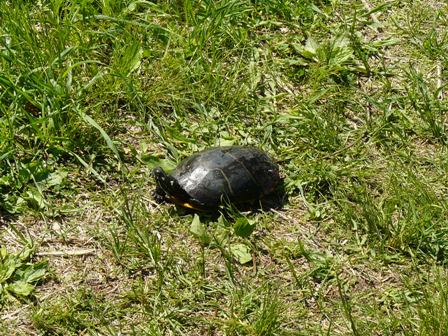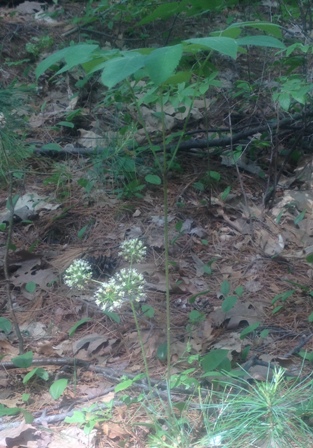Visitors are finding Eastern Painted Turtles basking on logs in the marsh, on the trails and in the parking lot. The turtles on land are females looking for sandy, gravelly places to dig and then lay their eggs. After carefully covering them up, the turtle will return to the water. When eggs hatch in the fall or next spring, the small turtles are on their own to find their way to the water.
Early spring features fiddleheads, a term that describes the shape of the fern as it emerges from the ground – like the head of a fiddle. When fiddleheads unfurl into fronds, you can tell the kind of fern. This one, in the pine forest, is easy. It looks like its name, cinnamon fern. The colored stalks are full of spores that will eventually create young ferns.
Another plant of the forest floor is wild sarsaparilla. One stalk, towering over the flower stalk, has leaves of three and the other has balls of white flowers. Watch out! Poison ivy also has leaves of three.
Beautiful to see, but this male mute swan can aggressively attack geese, ducks, and even people if it feels threatened. Swans also dredge deeply in the marsh, pulling up aquatic plants. Too many swans in one place can do a lot of damage to pond bottoms.





